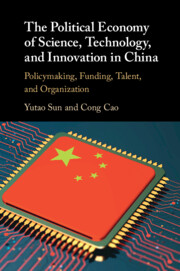125 results
Chapter 9 - A Research Agenda for Young People’s Psychological Response to Climate Change
- from Part I - Conceptual Foundations of Climate Distress in Young People
-
-
- Book:
- Climate Change and Youth Mental Health
- Print publication:
- 13 June 2024, pp 168-186
-
- Chapter
- Export citation
14 - Perspectives and Prospects
-
- Book:
- The Archaeology of Southern Africa
- Published online:
- 15 May 2024
- Print publication:
- 06 June 2024, pp 432-450
-
- Chapter
- Export citation
Chapter 20 - Adult Mental Health Services
-
-
- Book:
- Seminars in General Adult Psychiatry
- Published online:
- 04 April 2024
- Print publication:
- 18 April 2024, pp 767-804
-
- Chapter
- Export citation
Chapter 7 - Audiences
- from Part III - Theatre Communities
-
-
- Book:
- The Cambridge Companion to British Theatre since 1945
- Published online:
- 14 March 2024
- Print publication:
- 21 March 2024, pp 147-165
-
- Chapter
- Export citation
Chapter 8 - Black British Theatre
- from Part III - Theatre Communities
-
-
- Book:
- The Cambridge Companion to British Theatre since 1945
- Published online:
- 14 March 2024
- Print publication:
- 21 March 2024, pp 166-184
-
- Chapter
- Export citation
Chapter 5 - Subsidised Theatre
- from Part II - Theatre Sectors
-
-
- Book:
- The Cambridge Companion to British Theatre since 1945
- Published online:
- 14 March 2024
- Print publication:
- 21 March 2024, pp 102-122
-
- Chapter
- Export citation
Report of the target end-states for defined benefit pension schemes working party
-
- Journal:
- British Actuarial Journal / Volume 29 / 2024
- Published online by Cambridge University Press:
- 07 March 2024, e5
-
- Article
-
- You have access
- Open access
- HTML
- Export citation
4 - Producing Knowledge
-
- Book:
- Academic Freedom and the Transnational Production of Knowledge
- Published online:
- 04 January 2024
- Print publication:
- 25 January 2024, pp 64-90
-
- Chapter
- Export citation
6 - Quotidian Care
-
- Book:
- Caring for Cultural Heritage
- Published online:
- 09 November 2023
- Print publication:
- 23 November 2023, pp 180-208
-
- Chapter
- Export citation
Chapter 12 - Business Innovation
- from Part III - Implementation
-
- Book:
- Encouraging Innovation
- Published online:
- 17 August 2023
- Print publication:
- 31 August 2023, pp 143-156
-
- Chapter
- Export citation
8 - Funding ALMA
-
- Book:
- The ALMA Telescope
- Published online:
- 03 August 2023
- Print publication:
- 17 August 2023, pp 141-153
-
- Chapter
-
- You have access
- Open access
- HTML
- Export citation
2 - Starting
- from Part I - Developing a Methodology
-
-
- Book:
- Conducting Research on Global Environmental Agreement-Making
- Published online:
- 07 August 2023
- Print publication:
- 10 August 2023, pp 25-42
-
- Chapter
- Export citation
4 - Funding
-
- Book:
- The Political Economy of Science, Technology, and Innovation in China
- Published online:
- 07 August 2023
- Print publication:
- 20 July 2023, pp 97-130
-
- Chapter
- Export citation

The Political Economy of Science, Technology, and Innovation in China
- Policymaking, Funding, Talent, and Organization
-
- Published online:
- 07 August 2023
- Print publication:
- 20 July 2023
8 - How IOM Reshaped Its Obligations on Climate-Related Migration
- from Part II - IOM in Action
-
-
- Book:
- IOM Unbound?
- Published online:
- 15 June 2023
- Print publication:
- 29 June 2023, pp 213-234
-
- Chapter
-
- You have access
- Open access
- HTML
- Export citation
A survey of weed research priorities: key findings and future directions
-
- Journal:
- Weed Science / Volume 71 / Issue 4 / July 2023
- Published online by Cambridge University Press:
- 13 June 2023, pp. 330-343
-
- Article
-
- You have access
- Open access
- HTML
- Export citation
Establishing the normative and comparative needs of assistive technology provision in Queensland from the agency and funding scheme perspective
-
- Journal:
- Brain Impairment / Volume 24 / Issue 2 / September 2023
- Published online by Cambridge University Press:
- 22 May 2023, pp. 204-218
-
- Article
-
- You have access
- Open access
- HTML
- Export citation
Chapter 21 - Uncertainty
- from Section 4 - Reflecting on the Trajectory
-
- Book:
- The Trajectory of Discovery
- Published online:
- 06 April 2023
- Print publication:
- 13 April 2023, pp 115-118
-
- Chapter
- Export citation
Chapter 12 - Kindling Creativity
- from Section 2 - The Financial Determinants of Discovery
-
- Book:
- The Trajectory of Discovery
- Published online:
- 06 April 2023
- Print publication:
- 13 April 2023, pp 67-72
-
- Chapter
- Export citation
Chapter 10 - The Medici Model
- from Section 2 - The Financial Determinants of Discovery
-
- Book:
- The Trajectory of Discovery
- Published online:
- 06 April 2023
- Print publication:
- 13 April 2023, pp 56-60
-
- Chapter
- Export citation



